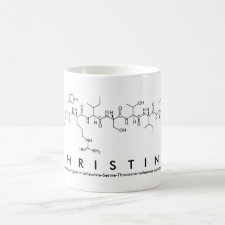
Authors: Azizi A, Shahhoseini F, Langille EA, Akhoondi R, Bottaro CS
Article Title: Micro-gel thin film molecularly imprinted polymer coating for extraction of organophosphorus pesticides from water and beverage samples.
Publication date: 2021
Journal: Analytica Chimica Acta
Volume: 1187
Article Number: 339135.
DOI: 10.1016/j.aca.2021.339135
Alternative URL: https://www.sciencedirect.com/science/article/pii/S0003267021009612
Abstract: Molecularly imprinted polymers (MIPs) have become an important class of materials for selective and efficient adsorption of target analytes. Despite versatility of MIPs for fabrication in numerous formats, these materials have been primarily reported as solid phase extraction packing materials. An effective thin film MIP prepared on stainless steel substrate is reported here for high throughput enrichment of organophosphorus pesticides (OPPs) from water and beverage samples followed by liquid chromatography tandem mass spectrometry (LC-MS/MS) analysis. The key factors controlling performance as well as best practices for optimized fabrication of thin film MIPs are presented. A pseudo-phase diagram is introduced to evaluate and predict the effect of the ratio of porogen (solvent, 1-octanol) volume to relative crosslinker mass on the desired polymer features (i.e., porosity, surface area, capacity, and selectivity). At low porogen ratios, a macroporous polymer with insignificant selectivity is formed, whereas at high porogen ratios a micro-gel polymer with superior selectivity towards targets is obtained. The porosity and morphology determined with nitrogen adsorption and scanning electron microscopy were attributed to specific regions in the pseudo-phase diagram. Other factors influencing selectivity and stability of the polymer, such as type of the template and its ratios with monomer (methacrylic acid) and crosslinker (ethylene glycol dimethacrylate) were optimized. The prepared thin film MIPs were characterized using adsorption isotherms and adsorption kinetics, and evaluated for matrix effects (high humic acid content) and cross-reactivity in presence of other pesticides and pharmaceuticals. The optimized method provided limits of quantitation (LOQs) ranged from 0.002 to 0.02 ng mL-1 in water and from 0.095 to 0.48 ng g-1 in apple juice. Regarding inter-device variability (CV~10% without normalization), excellent linearity (R2 > 0.99), satisfactory accuracies (90-110%) and precisions (<15%) were obtained
Template and target information: organophosphorus pesticides, OPPs
Author keywords: Thin film molecularly imprinted polymers, Microgel polymer, organophosphorus pesticides, sample preparation, environmental samples, Beverage samples



Join the Society for Molecular Imprinting

New items RSS feed
Sign-up for e-mail updates:
Choose between receiving an occasional newsletter or more frequent e-mail alerts.
Click here to go to the sign-up page.
Is your name elemental or peptidic? Enter your name and find out by clicking either of the buttons below!
Other products you may like:
 MIPdatabase
MIPdatabase









